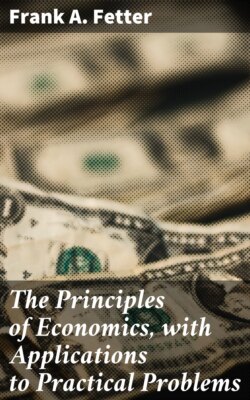Читать книгу The Principles of Economics, with Applications to Practical Problems - Frank A. Fetter - Страница 30
На сайте Литреса книга снята с продажи.
ОглавлениеThe margin of advantage and the marginal pair
3. Where two-sided competition exists, the bidding goes on until a price is reached where the least eager seller and the least eager buyer have the narrowest possible motive to exchange. As the market ratio varies from those in the minds of the individuals when they come to the market, there is left a considerable margin to some and a very small one to others. This difference between the market value and the ratio of exchange at which any given individual would continue to exchange for the good may be called the margin of advantage. Moreover, the buyers will have a margin and the sellers a margin, and as that margin narrows there is less and less motive to continue the exchange until, finally, the margin disappearing, the buyer or seller, withdrawing from the market, ceases to be an exchanger, at least for that particular part of the goods.
The least eager buyer and the least eager seller may be called the marginal pair. They are the buyer and the seller respectively having the narrowest margin of advantage. Their outside estimates are nearest to the market ratio. If the market ratio shifts slightly in either direction, one of them will drop out of the exchange. It is evident that a buyer who is taking ten units may be on the margin with reference to the tenth unit, and yet may continue to be one of the most eager buyers to secure one unit. Thus, the marginal buyer is to be thought of as that person who, logically considered, is the least eager, or on the margin, with reference to a particular unit of supply, however eager he may be with reference to any other unit of supply. It would be well to recall here the discussion of the nature of wants and the variation in the intensity of demand.
Units of Goods
Market values built on individual estimates
4. Market values are built up on subjective valuations. The idea of market values, therefore, is that of the want-gratifying power of goods as expressed in terms of other goods, where there are various buyers and sellers. They are not an average of the subjective valuations, nor are they made up of the extremes. They correspond closely with the subjective estimates of two of the exchangers. The other parties to the exchange are willing to accept the market ratio, for it offers them more inducements than it does to either one of the marginal pair.
